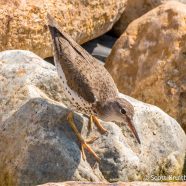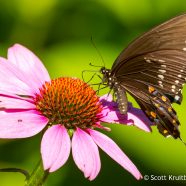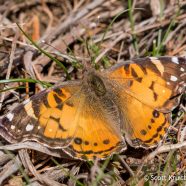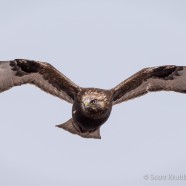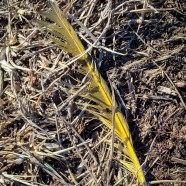Spotted Sandpiper
The Spotted Sandpiper (Actitis macularius) is one of our easier to identify shorebirds from any distance, and their unique behaviors make them a stand out from the crowd – literally. While you may run into large flocks of shorebirds numbering in the dozens, hundreds, or even thousands heading south in the summer along lakes, in marshes, or on the Atlantic coast, you will very likely find only one or two or a handful of Spotted Sandpipers at a time. Even if multiple Spotteds are present in one place they will probably be on different flocks, not bumping into one another or seeking the...
Read MoreSpicebush Swallowtail on Eastern Purple Coneflower
This breathtaking sight was a recent morning surprise for me as once again the wonderful Eastern Purple Coneflower (Echinacea purpurea) brought in a special friend in the form of a Spicebush Swallowtail (Papilio troilus) butterfly. It can be somewhat difficult to identify the Spicebush Swallowtail as the Black Swallowtail (Papilio polyxenes) looks very similar. To me, in terms of general and unscientific impressions, the Spicebush Swallowtail is a duller black, flies a little stronger, and seems a little larger with broad wings. One scientific way to tell the species apart if you have a view...
Read MoreAmerican Lady Butterfly
Spring is slowly coming to Stratford Point with birds like the American Kestrel and Palm Warbler showing up in the last couple of days. Here’s an American Lady butterfly seen earlier today. We cannot wait until our gardens are full of birds, butterflies and more! It will be an exciting year.
Read MoreRough-legged Hawk
This Rough-legged Hawk put on a brief but thrilling show for me today, facing into the wind to help it hover while scanning the land below for any small mammal prey. The wind was particularly strong thanks to the major storm currently impacting the Northeast region. Whichever one of the hawk’s eyes that was being battered by the wind the most was often covered by its nictitating membrane. This third eyelid is almost like wearing a pair of sunglasses for the raptor in that it can still see while the eye is more protected than it would be otherwise. It was also keeping the eye moist with...
Read MoreFlicker Feather
This feather is another find from exploring the outdoors this weekend with my dog Zach. The number of birds with long yellow feathers around in the autumn or winter seasons is relatively short, and it looks like a Northern Flicker (Colaptes auratus). Roger Tory Peterson saw this brilliant flash of gold in a flicker’s wings and it helped inspire him to change the world. What always makes me use my imagination is thinking about seeing a deep red explosion coming from a Northern Flicker bursting from the ground. The red-shafted forms fill the American west, and someday I hope to go see...
Read More



